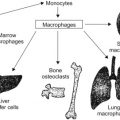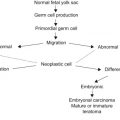Abstract
Anemia can be defined as a reduction in hemoglobin concentration, hematocrit, or number of red blood cells per cubic millimeter. The lower limit of the normal range is set at two standard deviations below the mean for age and sex for the normal population. Causes of anemia are classified based on morphology, mean corpuscular volume (MCV) and red cell distribution width (RDW)
Keywords
Anemia, Classification, Red cell morphology, Mean corpuscular volume (MCV), Red cell distribution width (RDW), Hemolytic anemia, diagnosis
Classification and Diagnosis
Anemia can be defined as a reduction in hemoglobin concentration, hematocrit, or number of red blood cells per cubic millimeter. The lower limit of the normal range is set at two standard deviations below the mean for age and sex for the normal population. 1
1 Children with cyanotic congenital heart disease, chronic respiratory insufficiency, arteriovenous pulmonary shunts, or hemoglobinopathies that alter oxygen affinity can be functionally anemic with hemoglobin levels in the normal range.
This definition will result in 2.5% of the normal population being classified as anemic and by definition 2.5% of the population may receive unnecessary hematological investigations. Clinicians should be cognizant of this and temper investigations of the patient in the light of other clinical and laboratory findings.
The first step in diagnosis of anemia is to establish whether the abnormality is isolated to a single cell line (red blood cells only) or whether it is part of a multiple cell line abnormality (red cells, white cells, and platelets). Abnormalities of two- or three-cell lines usually indicate one of the following:
- •
bone marrow involvement (e.g., aplastic anemia, leukemia), or
- •
an immunologic disorder (e.g., connective tissue disease or immunoneutropenia, idiopathic thrombocytopenic purpura (ITP), or immune hemolytic anemia singly or in combination), or
- •
sequestration of cells (e.g., hypersplenism).
Table 3.1 presents an etiologic classification of anemia and the diagnostic features in each case.
| Etiologic classification | Diagnostic features |
|---|---|
| |
| Hypochromic, microcytic red cells; low MCV, low MCH, low MCHC, high RDW, a low serum ferritin, high FEP, guaiac positivity |
| Macrocytic red cells, high MCV, high RDW, megaloblastic marrow, low serum, and red cell folate |
| Macrocytic red cells, high MCV, high RDW, megaloblastic marrow, low serum B 12 , decreased gastric acidity; Schilling test positive |
| Clinical scurvy |
| Kwashiorkor |
| Hypochromic red cells, sideroblastic bone marrow, high serum ferritin |
| Clinical hypothyroidism, low T 4 , high TSH |
| |
| Limb abnormalities, thrombocytopenic purpura absent megakaryocytes |
| |
| Absent red cell precursors |
| Absent red cell precursors |
| |
| Neutropenia, recurrent infection |
| |
| Multiple congenital anomalies, chromosomal breakage |
| Familial history, no congenital anomalies |
| Marked mucosal and cutaneous abnormalities |
| |
| No identifiable cause |
| History of exposure to drugs, radiation, household toxins, infections; (parvovirus B19, HIV) associated immunologic disease |
| |
| |
| Bone marrow: morphology, cytochemistry, immunologic markers, cytogenetics, molecular features |
| VMA, imaging studies, skeletal survey, bone marrow |
| |
| Evidence of systemic illness |
| BUN and liver function tests |
| Clinical evidence |
| Rheumatoid arthritis |
| Clinical evidence |
| Hypochromic anemia, ring sideroblasts |
| Overt or occult guaiac positive | |
| |
| Splenomegaly, jaundice |
| Morphology, osmotic fragility |
| Autohemolysis, enzyme assays |
| |
| |
| |
| Hb electrophoresis |
| Quantitative HbF, A 2 content |
| |
| Direct antiglobulin test (Coombs’ test) |
| |
| Direct antiglobulin test, antibody identification |
| |
| Decreased C 3 , C 4 , CH 50 -positive ANA |
| Anemia—direct antiglobulin test positive |
| Neutropenia—immunotropenia, thrombocytopenia—ITP |
| |
a RDW 5 coefficient of variation of the RBC distribution width (normal between 11.5% and 14.5%).
Once the anemia has been established to be exclusively a red cell problem a useful approach to understanding the anemia is to separate it into two pathogenetic categories
- 1.
Disorders of depressed red cell formation due to ineffectual erythropoeisis in which the marrow has many erythroblasts and there is a reticulocytosis or failure of erythropoiesis in which there is a paucity of erythroblasts in the marrow, an absolute erythroblastopenia and there is a reticulocytopenia (usually due to marrow failure diseases).
- 2.
Disorders of erythrocyte destruction (hemolysis) or red cell loss (hemorrhage).
The blood smear is very helpful in the diagnosis of anemia. It establishes whether the anemia is hypochromic, microcytic, normocytic, macrocytic, or shows specific morphologic abnormalities suggestive of red cell membrane disorders (e.g., spherocytes, stomatocytosis, or elliptocytosis) or hemoglobinopathies (e.g., sickle cell disease, thalassemia). Table 3.2 lists the differential diagnoses based on the specific red cell morphological abnormalities.
|
Stay updated, free articles. Join our Telegram channel

Full access? Get Clinical Tree





